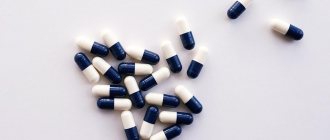K intestinal dysbiosis
is a violation of the microbial ecology of the intestine, which causes disturbances in the functioning of the gastrointestinal tract, and in the long term, diseases. The role of dysbiosis is being actively studied, but scientists are already suggesting that a long-term state of dysbiosis (abnormal structure of the intestinal flora, excessive growth of some organisms and inhibition of others) has an enormous impact on human health.
Chronic intestinal disorders are associated and associated with dysbiosis, for example, IBS - irritable bowel syndrome, Crohn's disease, food allergies, ulcerative colitis, atopic eczema (dermatitis), autoimmune disorders, unexplained fatigue, arthritis, ankylosing spondylitis, even neuropsychiatric disorders (autism), oncology of the colon and breast. Research continues, but now all doctors and scientists are confident that the role of gastrointestinal microflora in our health, performance and longevity is enormous.
Normally, the gastrointestinal microbiota has the following composition:
- in the stomach there is the lowest density of microorganisms with a predominance of lactobacilli, streptococci, and sarcina;
- the small intestine is populated predominantly by lactobacilli and streptococci in an amount of 103-108 CFU/ml;
- The large intestine is especially densely populated - up to 1012 CFU/ml; bacteroides, clostridia, fusobacteria, and bifidobacteria predominate.
On average, the intestines are populated by about 50 trillion (!) microorganisms of approximately 500 different species, including yeast, the role of which is not yet completely clear.
Until some time, microbiota were considered exclusively commensal organisms, i.e., coexisting harmlessly with humans. However, it turned out that the relationship between the “host” and microorganisms is more complex and based on mutual benefit.
Microbiota maintains our immunity in good shape, prevents the growth of harmful types of microorganisms, exhibits antagonism to pathogenic bacteria, produces enzymes, and produces bacteriostatic and bactericidal substances. The microbiota plays a great role in modulating physiological processes: motility and secretion of the gastrointestinal tract, maintaining the integrity of the epithelial barrier.
Go to analyzes
Dysbacteriosis: causes, symptoms
Dysbiosis occurs when colonies of microorganisms in the human gastrointestinal tract become unbalanced. This is expressed in the uncontrolled growth of some colonies and the suppression of others. So, quite often colonies of Candida yeast begin to grow. Normally, they are commensals, but if the balance is disturbed, they can cause intestinal candidiasis - a severe form of dysbiosis with increased gas formation, diarrhea, weight loss, and nutrients necessary for the normal functioning of the body. If intestinal candidiasis develops in children, they are delayed in growth and development.
Dysbiosis is often the result of antibiotic treatment. Its complications are especially dangerous. As a result of the destruction of natural microflora, the intestines can be colonized by Clostridium difficile, the causative agent of pseudomembranous colitis. The disease is potentially life-threatening, and the bacteria themselves are resistant to many antibiotics. But even after a course of effective antibiotics, the disease can recur. To break this vicious circle and restore a healthy microbiota that can resist clostridia, fecal transplants from healthy donors have begun in the United States and Europe. Only in this way was it possible to defeat the systemic infection and restore health to people.
This example once again confirms how important the intestinal microbiota is in our lives. Therefore, it is important to know and monitor her condition, and if the first signs of dysbiosis occur, urgently undergo examination and take measures if the results do not correspond to the norm.
Treatment of dysbiosis
If a deficiency of bifidobacteria and lactobacilli and an excess of opportunistic bacteria or the appearance of pathogenic microorganisms are detected in the body, this indicates that it is necessary to restore normal microflora. Probiotics are used to treat dysbiosis. Complete restoration of the body's own microflora, not only in composition, but also in activity, is possible only with the help of preparations containing bifidobacteria and lactobacilli of the most physiological (characteristic) species for humans. Beneficial bacteria take their place in the intestine and change the state of its environment, gradually displacing representatives of pathogenic and opportunistic flora.
What is important to consider when choosing probiotics:
1. Probiotics must contain strains of those bacteria that are characteristic of the human body. Of the bifidobacteria in the human intestine, the bacteria B. bifidum and B. longum are primarily represented. Therefore, they should form the basis of the drug.
2. For a probiotic to be effective, the bacterial titer in the preparation must be at least 1010 degree (the majority of probiotic preparations have a bacterial titer of 107).
3. Liquid probiotics are more effective than dry ones. They begin to act as soon as they enter the human body (in dry preparations, bacteria are in a state of suspended animation, from which they emerge only 5-8 hours after ingestion; therefore, they really begin to act almost after a day, when they get stronger and multiply sufficiently). In addition, only liquid probiotics (and not all of them) have the ability to adhere (attach to the intestinal walls), forming a biofilm.
Liquid probiotic Bifidum BAG is an effective drug for the treatment of dysbiosis. It contains active strains of bifidobacteria species B. bifidum (4 strains) and B. longum (2 strains). The bacterial titer is 1011. Approved for use from the first days of life.
In combination with this probiotic, it is recommended to take the drug Trilact, which contains active strains of lactobacilli L. acidophilus, L. casei and L. plantarum. The bacterial titer is 1010. The drug is approved from 1 year of age (previously - according to doctors' indications).
Ecoflor contains bifidobacteria and lactobacilli, their metabolites, as well as an ultraselective enterosorbent. In addition to effectively cleansing the body of toxins, allergens, waste and opportunistic microflora, enterosorbent provides protection for the probiotic bacterial strains attached to it and increases the effectiveness of their effect on the body. Recommended from 3 years old.
Bifidum BAG, Trilact and Ecoflor quickly restore the intestinal microflora and get rid of dysbacteriosis.
Causes of dysbiosis:
- overgrowth of harmful intestinal bacteria or yeast;
- migration of microorganisms from the large intestine to the small intestine, bacterial overgrowth of the small intestine SIBO;
- genetic predisposition;
- passion for diets, food high in sugar and processed foods (steamed, fried, boiled, containing many artificial additives, preservatives);
- physical and psychological stress;
- environmental factors, including the ecological situation;
- unhealthy diet, poor nutrition, taking many medications, especially antibiotics, antacids;
- alcohol addiction and simply frequent alcohol consumption;
- poor oral hygiene.
Symptoms of dysbiosis:
- acid reflux, in which the contents of the stomach enter the esophagus, causing inflammation, damaging the walls, which is accompanied by pain;
- heartburn;
- dyspepsia - indigestion;
- bloating;
- excessive gas formation;
- pain in the lower abdomen;
- constipation;
- diarrhea;
- alternating constipation and diarrhea, rarely normal stool;
- constantly - bad breath, even though all teeth are healthy or sanitized;
- joint pain of unknown etiology.
When a doctor prescribes a test for the presence/absence of dysbiosis:
- if a person has undergone a long course of therapy with antibiotics, immunosuppressants, glucocorticosteroids, or a course of chemotherapy;
- if a person uncontrollably took antibacterial drugs or laxatives without a doctor’s prescription;
- if antibacterial therapy does not bring the expected result;
- if a person suffers from chronic alcoholism, chronic pancreatitis and other conditions characterized by malabsorption - lack of nutrients as a result of their insufficient absorption in the small intestine;
- with frequently recurring or regular diarrhea;
- for allergic diseases that are not amenable or poorly amenable to therapy;
- if a person has been exposed to radiation, chemicals;
- after surgical interventions;
- after acute intestinal infections.
Dysbacteriosis in children
Stool analysis for dysbacteriosis - result (example)
Dysbacteriosis in infants can be a consequence of abnormal nutrition of the mother, her use of medications, or improper feeding of the baby. In children of older adolescence, dysbiosis becomes a consequence of:
- poor nutrition (in an effort to lose weight);
- hobbies with hormones (to increase muscle mass); treatment with antibacterial, cytostatic and other drugs;
- stress.
Stool collection in children aged one year and older is performed in the same way as in adults. But for infants, this procedure has its own characteristics.
Methods for diagnosing intestinal dysbiosis
Bacteriological analysis of stool
Microbiological examination of stool reveals an imbalance of the intestinal microbiota.
During the test, the composition of the microflora, the quantitative ratio of microorganisms of normal microflora, opportunistic and pathogenic ones are determined. The obtained result allows the specialist to assess the state of the intestinal biocenosis, draw conclusions about its imbalance and disorders, gastrointestinal diseases caused by dysbiosis. How to prepare for a stool examination:
- do not take antibiotics (short course), antacids for 3-4 weeks;
- 72 hours before collecting biomaterial, do not take laxatives or administer rectal suppositories;
- 72 hours before collecting biomaterial, do not take drugs that color stool (iron preparations, barium sulfate, bismuth).
Biomaterial is collected in the morning, on an empty stomach, during the first bowel movement. To collect, you can use a pot that is thoroughly washed with laundry soap and then rinsed several times with warm boiled water. The toilet cannot be used.
Feces from the pot in a volume of approximately 1 teaspoon are transferred to a sterile container taken from the laboratory, and then delivered to the laboratory within 1-2 hours. Important!
The delivery time of the biomaterial must be clarified in the laboratory where you are going to undergo the study.
Disadvantages of bacteriological analysis
- low information content of the method for determining the parietal microflora, which is of greatest interest for analysis;
- long period of study;
- dependence on conditions/time of collection and transportation;
- low sensitivity, high probability of false negative results.
GC-MS - gas chromatography-mass spectrometry
This is a new method that allows you to determine the microecological status of a person and find out the origin of infectious and inflammatory processes.
The method detects an average of 50 microorganisms per test (bacteria, viruses, fungi), is highly sensitive and is based on the detection of waste products of microorganisms - markers. For analysis, blood from a vein, from a finger, any smears, sputum, vaginal discharge, wounds, urine, saliva, etc. are used. The method is very effective, but has one drawback - the high cost of the equipment. If you want to be tested for dysbacteriosis using the GC-CMS method, you must first find out in the laboratory what biomaterial needs to be submitted for testing.
PCR diagnostics of dysbiosis
PCR diagnostics is the gold standard for identifying microorganisms by their DNA and parts of DNA.
For bacteria, PCR diagnostics are 100% specific and can detect even single cells of microorganisms. Today, PCR diagnostics is a proven, well-proven method for determining viruses and bacteria, which allows you to quickly and accurately determine not only the composition of the microbiota, but also the quantitative ratio of microorganisms. The main advantage of the method, in comparison with bacteriological analysis, is the effective recognition of difficult-to-cultivate anaerobic bacteria, which is especially important in the detection of pathogenic clostridia.
Other advantages of the method:
- speed of diagnosis (2-3 hours);
- There are no strict requirements for the transportation and storage of fecal samples.
A microbiological study that allows you to assess the composition of the intestinal microflora - the concentration and ratio of “beneficial”, opportunistic and pathogenic microorganisms in the feces, determine the specific activity of the main probiotics in relation to identified microorganisms and their sensitivity to bacteriophages and antibiotics. Normal intestinal microflora (“useful” bacteria) include lactobacilli, bifidobacteria, enterococci, E. coli (typical), anaerobic flora (bacteroides). Conditionally pathogenic flora are enterobacteria, non-fermenting bacteria, staphylococci, anaerobic bacteria (clostridia), fungi. Pathogenic microorganisms are Salmonella, Shigella, and pathogenic Escherichia. When pathogenic and/or opportunistic microorganisms are identified, their sensitivity to antimicrobial drugs (antibiotics and bacteriophages) and probiotics will be determined. When microorganisms that make up the normal microflora are detected, sensitivity to antibiotics and bacteriophages is not determined, because has no diagnostic value.
Synonyms Russian
Intestinal dysbiosis, identification of probiotic antagonists.
English synonyms
Intestinal dysbiosis, antagonistic activity of probiotics and bacteriophage sensitivity test, Intestinal dysbacteriosis.
Research method
Microbiological method.
What biomaterial can be used for research?
Cal.
How to properly prepare for research?
- The study is recommended to be carried out before starting antibiotics and other antibacterial chemotherapy drugs.
- Avoid taking laxatives, administering rectal suppositories, oils, limit (in consultation with your doctor) taking medications that affect intestinal motility (belladonna, pilocarpine, etc.) and drugs that affect the color of stool (iron, bismuth, barium sulfate), within 72 hours before stool collection.
General information about the study
Intestinal dysbiosis (dysbiosis) is a violation of the composition and quantitative ratio of bacterial and fungal microorganisms of the gastrointestinal tract. Normally, the mucous membrane of the gastrointestinal tract is the habitat of so-called commensal microorganisms, which provide a number of protective functions in exchange for micronutrients used by humans. Most intestinal commensals belong to the genera Lactobacillus, Bifidobacterium and Bacteroides (obligate bacteria), although the composition and abundance of microorganisms varies greatly depending on the part of the gastrointestinal tract. Thus, the stomach is characterized by the lowest density of bacteria, among which Lactobacillus, Streptococcus and Helicobacter pylori predominate. In the small intestine, up to 103-106 CFU/ml of bacteria are found, mainly Streptococcus and Lactobacillus. The highest density of commensal microorganisms is observed in the colon (108-109 CFU/ml), where Bacteroides, Clostridium, Fusobacterium and Bifidobacterium predominate. Commensal microorganisms are in dynamic interaction with the intestinal epithelium and thus provide a mechanical barrier to pathogen invasion. In addition, they secrete a number of antimicrobial compounds (for example, defensins). Commensal bacteria are able to regulate the immune response of the intestinal mucosa and, in some cases, suppress inflammatory, including allergic, reactions. An imbalance in the microbiota occurs as a result of long-term or uncontrolled treatment with antibacterial drugs, impaired gastrointestinal motility (postoperative period, taking laxatives), malabsorption (chronic alcoholism, chronic pancreatitis) and some other conditions. Dysbacteriosis can lead to the development of diseases of the gastrointestinal tract and other organs. Thus, data have now been obtained on its role in the pathogenesis of Crohn's disease, ulcerative colitis and celiac disease, as well as chronic fatigue syndrome and atopic dermatitis.
The main method for diagnosing dysbacteriosis is the microbiological method, in which a qualitative and quantitative assessment of obligate, opportunistic and pathogenic microorganisms in feces is made. Based on the results of the study, a conclusion is made about a deficiency of obligate microorganisms or an excessive growth of opportunistic or pathogenic bacteria. Microbiological examination is one of the most specific and sensitive research methods used in the diagnosis of dysbiosis. It should, however, be remembered that the bacteriological composition of feces (it is used as a biomaterial) is somewhat different from the bacteriological composition of the intestinal mucosa. In addition, the test result may depend on many other factors, such as recent use of antibacterial drugs, probiotic-rich foods, or laxatives.
Taking into account the growing resistance of opportunistic and pathogenic microorganisms to antibacterial drugs, alternative treatment methods using probiotics are playing an increasingly important role in the treatment of dysbiosis. Probiotics are a group of drugs containing commensal bacteria, or yeast fungi. They are believed to protect the body from excess opportunistic and pathogenic microbiota. The totality of the protective properties of probiotics against any microorganism is called antagonistic activity and can be determined using microbiological testing. The analysis evaluates the antagonistic activity of the main probiotics used in gastroenterological practice. Determination of the antagonistic activity of probiotics is carried out before prescribing these drugs for the treatment of dysbiosis. It can be supplemented by an analysis of the sensitivity of identified microorganisms to antibiotics and bacteriophages.
The result of the analysis is assessed taking into account additional laboratory and instrumental data.
What is the research used for?
- For the diagnosis and treatment of intestinal dysbiosis, monitoring its treatment;
- to establish the causes of intestinal disorders;
- for the selection of rational antibiotic therapy.
When is the study scheduled?
- When examining a patient after a long course of treatment with antibacterial drugs;
- when examining a patient indicating a history of uncontrolled use of antibacterial drugs and laxatives;
- when identifying the resistance of opportunistic and pathogenic microorganisms to antibacterial drugs;
- when examining a patient with chronic pancreatitis, chronic alcoholism and other conditions accompanied by malabsorption;
- for chronic diarrhea;
- after long-term treatment with antibiotics, glucocorticosteroids, immunosuppressants, chemotherapy drugs;
- for allergic diseases that are difficult to treat (for example, atopic dermatitis);
- after exposure to chemicals or ionizing radiation – if there are symptoms of intestinal dysfunction;
- during a long period of recovery after acute intestinal infections.
What do the results mean?
| Types of microorganisms | Age, years | ||
| Less than 1 | 1-60 | Over 60 | |
| Bacteroides | 107– 108 | 109- 1010 | 1010- 1011 |
Intestinal dysbiosis is indicated by:
- an increase in the number of one or more types of opportunistic microorganisms with a normal number of bifidobacteria in the intestine,
- an increase in one or several types of opportunistic microorganisms with a moderate decrease in the number of bifidobacteria (by 1-2 orders of magnitude - up to 107-108 CFU/g),
- decrease in the content of representatives of obligate microflora (bifidobacteria and/or lactobacilli) without increasing the amount of saprophytic or opportunistic intestinal microflora,
- moderate or significant (7 CFU/g) decrease in the number of bifidobacteria in combination with a pronounced decrease in the number of lactobacilli, the appearance of altered forms of Escherichia coli, identification of one or more representatives of opportunistic microorganisms in high titers (up to 107-108 CFU/g).
What can influence the result?
- Antibacterial therapy or probiotic therapy.








